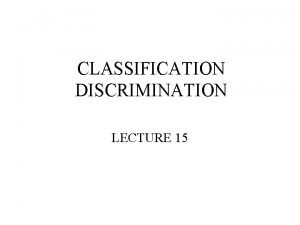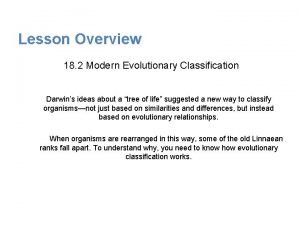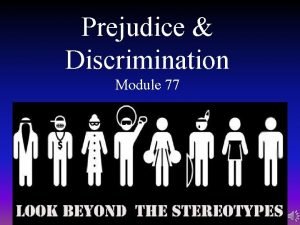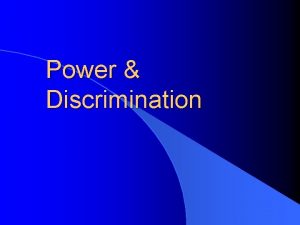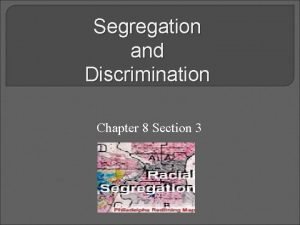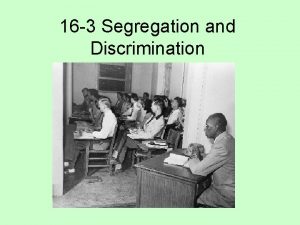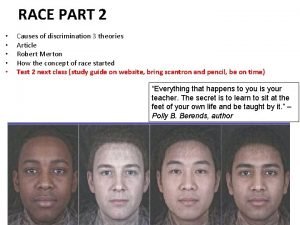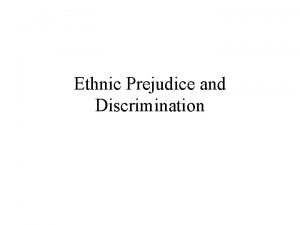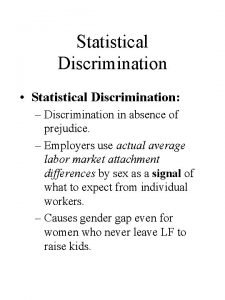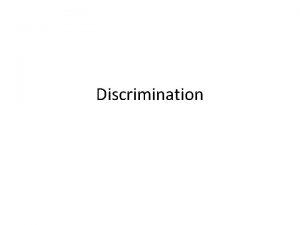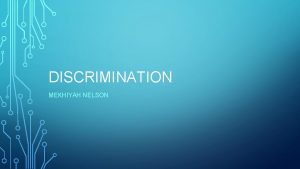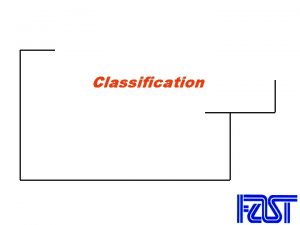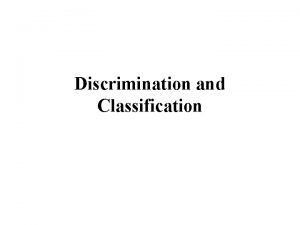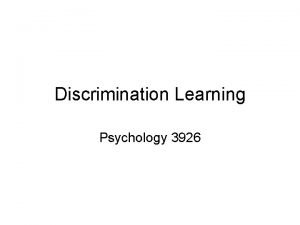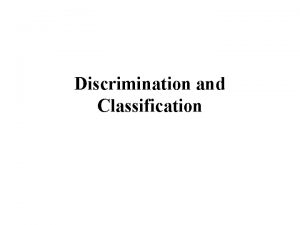Discrimination and Classification Discrimination Classification Discrimination Goal is













- Slides: 13

Discrimination and Classification

Discrimination & Classification • Discrimination: Goal is to separate individual cases into known population groups by their measurements on several variables. § Makes use of graphical and algebraic methods. § Goal is to separate groups as much as possible based on numeric values § Referred to as “Separation” • Classification: Observing new cases along with numeric values and assigning them to groups based on their numeric values § Makes use of an algorithm generated on known cases and applies it to new cases whose population is unknown. § Referred to as “Allocation”

Notation and Concepts • Notation: Populations ≡ p 1, p 2 Measured Variables: X • Conceptual Settings of Unknown Population: § Incomplete Knowledge of Outcome: The outcome is in future and cannot be observed when X is measured § Destruction Necessary to Observe Outcome: A product must be destroyed to observe quality status. § Unavailable or Expensive Assessments of Outcome: Authorship unknown or assessment by expensive gold standard may be needed

Setting up a Discriminant Function • Prior Probabilities for the 2 Populations – Assumes knowledge of relative population sizes. Will tend to classify individual cases into the “larger” population unless strong evidence in favor of “smaller” population. • Misclassification Cost – Is cost of misclassification same for objects from each of the populations? • Probability Density Functions – The distributions of the numeric variables for the elements of the 2 populations. Population 1: f 1(x) Population 2: f 2(x) • Classification Regions – Given an observations’ x values, it will be assigned to Population 1 or 2, R 1 ≡ {x} s. t. an observation is classified to Population 1, R 2 ≡ W – R 1 is the set of x where it is classified to Population 2

Mathematical Notation

Regions that Minimize Expected Cost of Misclassification

Allocation of New Observation x 0 to Population

Normal Populations with Equal S

Sample Based Discrimination

Fisher’s Method for 2 Populations

Classification of Multivariate Normal Populations when S 1 ≠ S 2

Evaluation of Classification Functions

Jacknife Cross-Validation (Lauchenbruch’s Holdout Method) • For Population 1, remove each observation 1 -at-time and fit the classifier based on all (n 1 -1)+n 2 remaining cases. Classify the hold-out case. • Repeat for all n 1 cases from Population 1. n 1 m(H) ≡ # misclassified as p 2 • Repeat for all n 2 cases from Population 2. n 2 m(H) ≡ # misclassified as p 1
 Discrimination vs classification
Discrimination vs classification What is the goal of evolutionary classification
What is the goal of evolutionary classification Usually negative, _____ is an attitude or prejudgment.
Usually negative, _____ is an attitude or prejudgment. Power of discrimination definition
Power of discrimination definition Chapter 16 section 3 segregation and discrimination
Chapter 16 section 3 segregation and discrimination Chapter 8 section 3 segregation and discrimination
Chapter 8 section 3 segregation and discrimination Gordon allport's scale of prejudice and discrimination
Gordon allport's scale of prejudice and discrimination In what regions did the literacy test exist
In what regions did the literacy test exist Government chapter 21 diversity and discrimination
Government chapter 21 diversity and discrimination Diversity and discrimination
Diversity and discrimination Merton's typology of prejudice and discrimination
Merton's typology of prejudice and discrimination Jobs for stutterers
Jobs for stutterers Brightness adaptation and discrimination
Brightness adaptation and discrimination Prejudice
Prejudice
